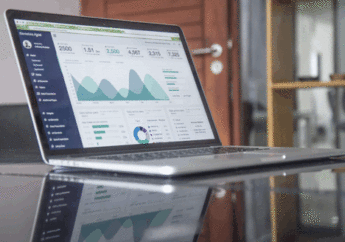Website Accessibility: Building a Digital Space for Everyone
by Soumava Goswami Technology Published on: 14 January 2025 Last Updated on: 16 January 2025

Thanks to today’s many advanced digital technologies, a website is the first thing customers will usually see when they search for your business. Therefore, many struggling disabled individuals see the web as a barrier due to its poor accessibility. Hence, there is a need for a strong digital space.
However, fortunately, this is where an accessible website can help. This is because it removes such barriers, meaning that people can view content regardless of their physical capabilities. In fact, it’s not only about equal opportunity but also a great form of marketing. As a result, it results in the expansion of the business as well.
What Is Website Accessibility?
In simple terms, website accessibility means everyone can access and navigate the website, even those with disabilities. Thereby, physically impaired individuals and individuals who have cognitive disabilities, auditory impairments, and more must have their own digital space.
For example, a visually impaired person might need to use a screen reader to navigate your website. On the other hand, your website must also provide digital space to a child with mobility issues who can navigate via keyboard only.
Let’s say you want to view accessibility from a different perspective. Here, you need to think of a store and its ramps along with Braille signs. This type of store is more inclusive and welcoming to everyone, including the disabled. Hence, this must be the goal of creating a website.
Creating a Digital Space: Why Website Accessibility Matters?
The following are some of the major reasons why you need to make your website accessible to all to ensure an engaging digital space:
1. Expand Your Audience
Statistics show that over 1 billion people in the world have a disability of some type. Hence, if you make your websites accessible, you can try to reach out to this vast untapped market of customers.
2. Enhancing User Experience for All Users
If your website is accessible, it is also advantageous for your users. For instance, easy-to-use interfaces, legible typefaces, and video captions have a place among those who need help. However, they are also helpful for mobile users, seniors, and people who find themselves in a loud setting.
3. Remain Within The Set Laws
For instance, the US (ADA) and the UK (Equality Act 2010) have regulations in place regarding web accessibility. Therefore, ignoring those acts can lead to fines, lawsuits, or reputational damages. As a result, it can be disastrous for your business website within a short span of time.
However, if you focus on global disability issues and actively engage in bringing a solution. Hence, you can stay within the bounds of the law. Thereby, you can demonstrate that you are investing in diversity issues.
4. Enhanced SEO And Traffic
If your website is accessible, it will rank higher in search engines. Here, you need to use elements like alt texts, appropriately developed headings, and orderly resources. This way, you can help search engines interpret what your website is about. Hence, you can rank better and increase visitation.
How to Make the Website More Readily Accessible?
The following are the factors you need to consider if you want to make your website readily accessible, thereby creating a more inclusive digital space:
1. Add Alt Text for Images
The function of alt text is to describe a picture. For instance, one can read a specific part of the web page on the adaptive devices. This is called visual information.
For example, instead of just loading a picture and naming it IMG_1234, name it “A woman with a smile with a shopping bag.”
2. Include Captions For Videos.
Captions add to the assortment of video content. This way, you can make your videos comprehensible to individuals with hearing loss. Moreover, it will also assist people who want to watch videos in a noise-filled environment.
3. Activate Keyboard Navigation
Ensure that users can access every single website component via the keyboard. Additionally, do checks for menus, buttons, and forms. Moreover, you need to evaluate them from time to time to ensure mouse operations are not necessary.
4. Use a Combination of Light and Dark Colors
To ensure easy reading, make your text brighter than the background. As a result, even users with poor eyesight will find your website helpful. Do not simply use color for an important purpose.
5. Conduct Accessibility Audits at Certain Intervals
Try to minimize the gaps in accessibility. To do this, you need to use tools such as WAVE, Axe, or Google Lighthouse. Moreover, do regular checks to ensure that your site is user-friendly and remains in conformity.
Real-World Impact of an Accessible Digital Space
Generally, accessibility choices work in real-time. Once, a visually impaired friend complained about how a product image on a website does not have an alt text. As a result, online shopping becomes impossible.
On the other hand, another website was quite accessible and easy to use. Hence, the person was able to quickly place an order. The second website had more descriptive texts. Once you implement such measures, you can ensure brand loyalty.
To put it succinctly, any company succeeding today is doing so by using voiceover-compatible devices or audio description features. These were popularized by Apple and Netflix, making inclusivity a win for everyone.
Business Benefits of an All-Inclusive Digital Space
If disabled people find your websites accessible, morally, and legally correct, it will strengthen your brand image and customer loyalty. Meanwhile, you can significantly cut down on business competition. The better the kosher results, there are lower bounce rates in the pages, more visits, and converters.
Final Thoughts
Website accessibility and a strong digital space are not merely formalities. It means that everyone has a right to a better Internet experience. For a start, put alt texts on your photographs, activate keyboard navigation, and do a sanity check on your site regularly.
There can be no confusion as to the message sent out by a site that is accessible. You must ensure that the site is for everyone. This is not merely sound ethics but also a sound and innovative business practice. Hence, go on, take that first step today, and design a site that sincerely welcomes everyone.



































































































